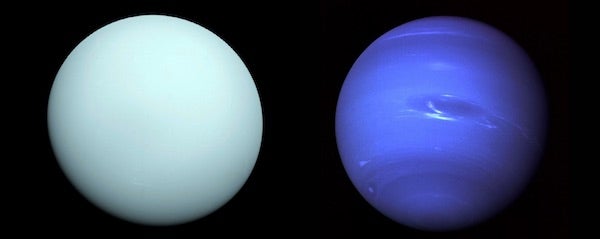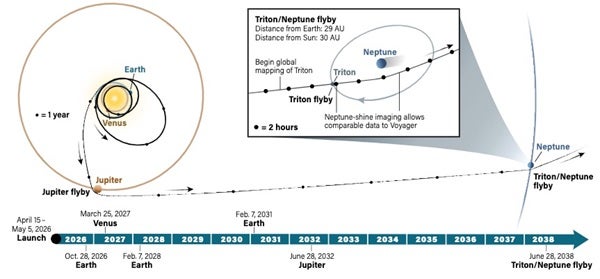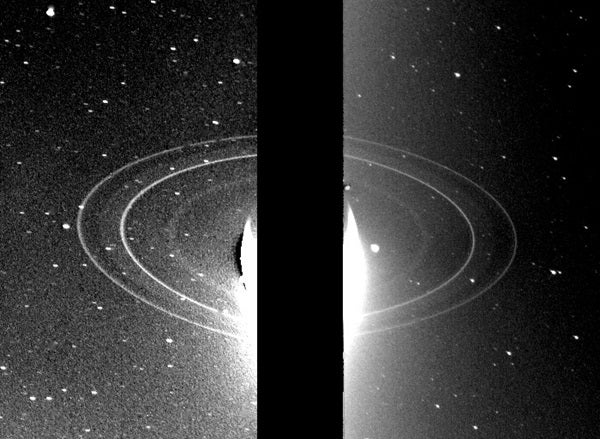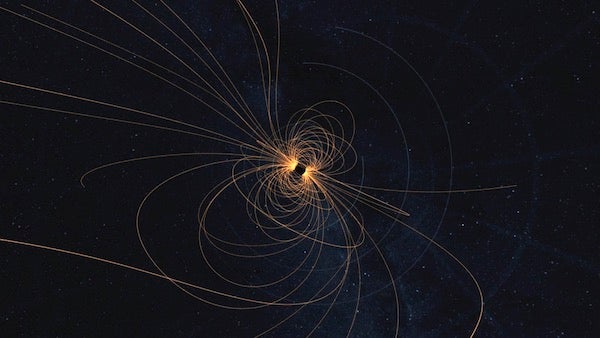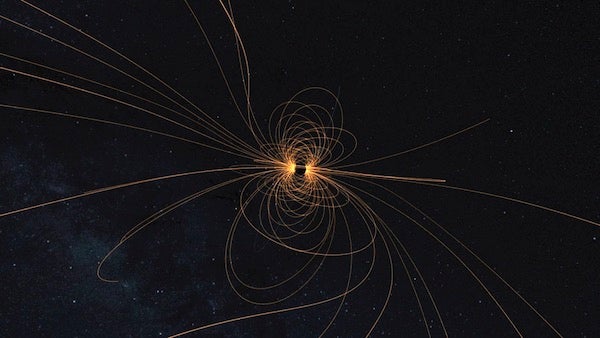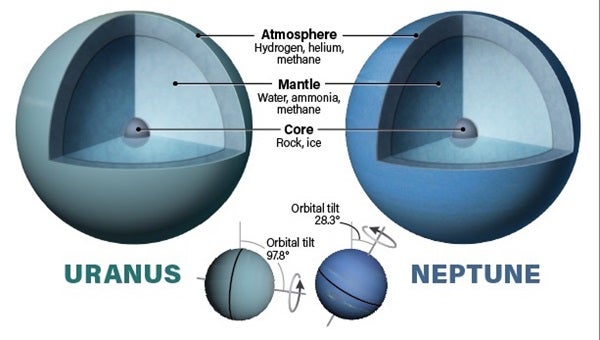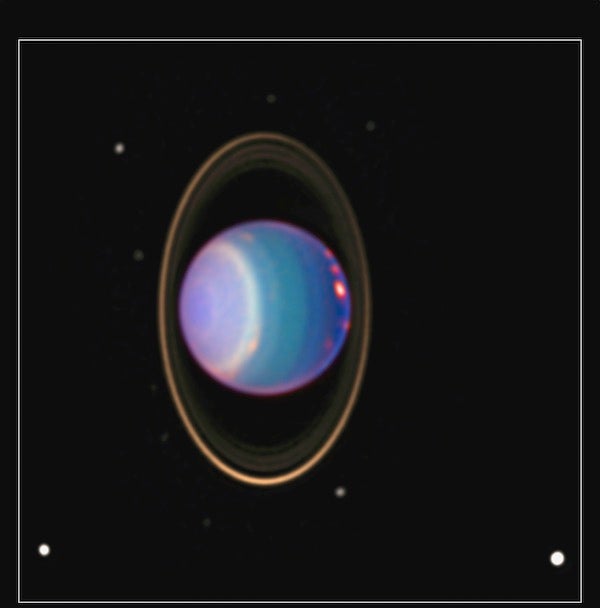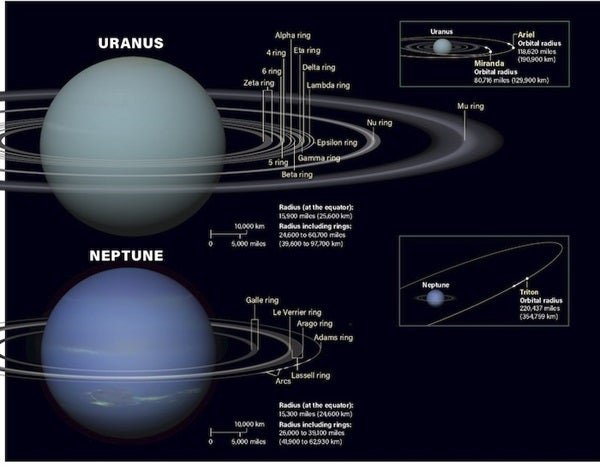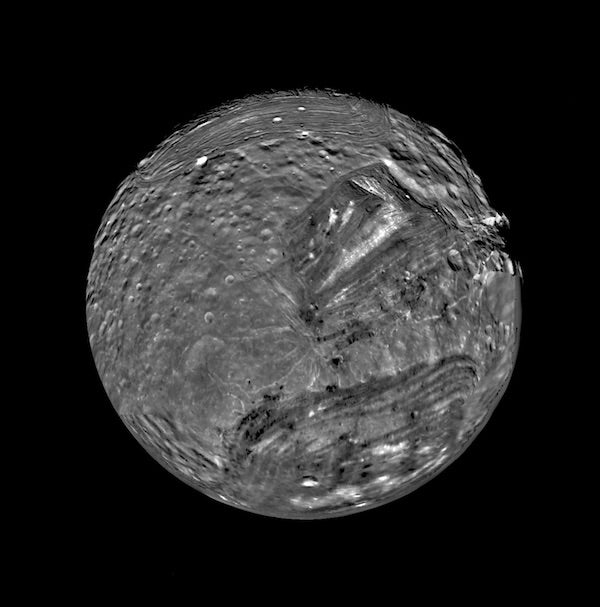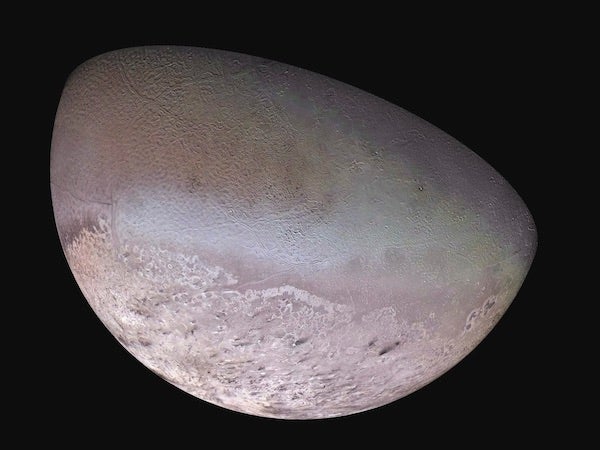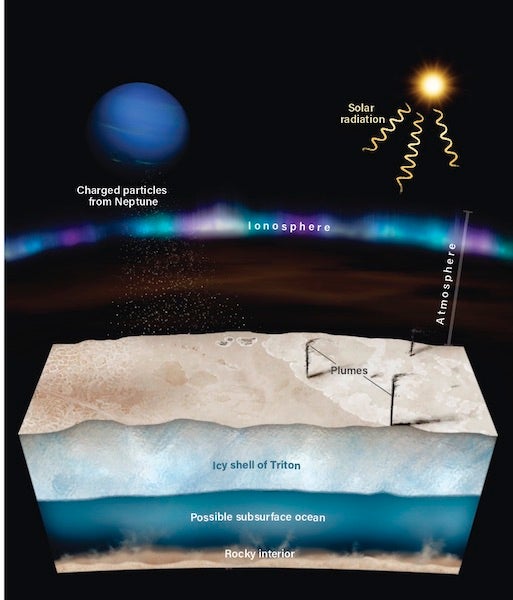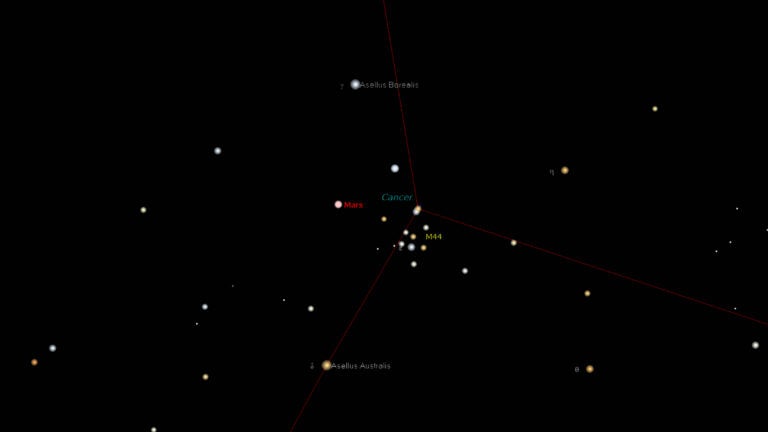In the 63 years since Sputnik, humanity has only visited Neptune and Uranus once — when Voyager 2 flew past Uranus in January 1986 and Neptune in August 1989 — and even that wasn’t entirely pre-planned. The unmitigated success of Voyager 1 and 2 on their original mission to explore Jupiter and Saturn earned the twin spacecrafts further missions in our solar system and beyond, with Neptune and Uranus acting as the last stops on a Grand Tour of the outer solar system.
In the 31 years since Voyager 2 left the Neptune system in 1989 and began its interstellar mission, more than a dozen proposals have been offered for return missions to one or both ice giants. So far, none have made it past the proposal stage due to lack of substantial scientific interest. Effectively, the planetary research community has been giving the ice giants the cold shoulder.
But recently, exoplanet data began revealing the abundance of icy exoplanets in our galaxy “and new questions about solar system formation are bringing focus back to Uranus and Neptune,” says astronomer Candace Hansen.
And it just so happens to be the perfect time to consider a return trip.
Time to return
The decision to aim Voyager 2 at the ice giants was made in 1981, and took advantage of a rare planetary alignment of the outer planets. During its flyby of Jupiter, Voyager 2 received a “kick” from the planet, slingshotting it onto the right path to Uranus and eventually Neptune. A similar gravity assist from Jupiter will be possible between 2029 and 2034.
Voyager 2’s flyby of the ice giants returned a wealth of new knowledge about these frigid behemoths, succeeding beyond everyone’s wildest dreams. The spacecraft discovered new rings and new moons around both planets, found wild winds on Neptune when none were expected, and revealed that Neptune’s moon Triton was truly spectacular, hinting at the possibility of a subsurface ocean that could potentially support microbial life.
Hansen, a member of the Voyager imaging team during the flybys of Uranus and Neptune, recently recalled two of Voyager’s many highlights: “the images of plumes or clouds (we don’t know which) on Triton. And of course, seeing Neptune’s Great Dark Spot for the first time.”
But countless questions remain, such as how the planets formed around the early Sun and the cause of their extreme axial tilts compared to the rest of the planets in the solar system. For decades, scientists have clamored for a return to these majestic planets. And now might be the perfect time to plan a return visit, as key planetary alignments approach at the end of the decade. If we can beat the clock, an ice giant mission could help us unravel the lingering mysteries of these planets and provide new insight into their chilling beauty.
Migrating planets and screwy magnetospheres
Uranus and Neptune are called ice giants, and rightly so. The planets circle the Sun at such great distances, receiving so little external heat, that their average temperatures are hundreds of degrees below freezing.
As it turns out, ice giants are some of the most prevalent planets currently found in the universe, too. As some of the largest planets in a star system, they tend to be easier to spot when they transit their host star. However, current models say that ice giants should be an anomaly, as the window for them to form is narrow. The solar nebula — the cloud of gas and dust left over after the formation of a star from which planets are born — needs to be almost entirely dissipated for ice giants to snatch up the available gas and ice. They also first need to have substantial cores before they can accrete any that lingering gas and ice.
Figuring out exactly how and where Neptune and Uranus formed could help scientists better understand the abundance of ice giants lurking in the universe. Computer simulations suggest that the low density of planetesimals and the weak solar gravity in the primordial outer solar system would have made it very difficult for the ice giants to form where they are today.
And perhaps they didn’t. Like Jupiter and Saturn, Uranus and Neptune may have formed closer to the early Sun before, via gravitational processes, eventually migrating outward to their present positions.
But how they formed isn’t the only strange aspect about our ice giants.
Magnetospheres are typically in line with a planet’s rotation, but Uranus’ is tipped at 59 degrees from the planet’s rotational axis and offset from its center by one-third the planet’s radius. The result is a magnetosphere that wobbles in a complex pattern as Uranus spins on its axis.
Scientists still don’t entirely understand these anomalous magnetospheres. They know that planetary magnetic fields are generated by internal dynamos, or conductive global mantle oceans. But with magnetic poles so skewed off-center, the exact cause of Uranus’ and Neptune’s screwy magnetospheres is, like their formation, still unknown.
Magnificent blue marbles
Though the planet’s strange magnetic fields and uncertain formation may have scientists scratching their heads, when Voyager 2 revealed the first images of the planets’ atmospheres, it took our collective breath away. The valuable flyby revealed some unexpected puzzles about the atmospheres and internal mechanics of both planets.
But despite receiving so little light from the Sun, Neptune has weather — and what weather! Wispy white clouds scoot above the planet, and in 1989, Voyager 2 clocked winds near a strange, previously unseen dark spot on Neptune, reaching 1,000 mph (1,609 km/h) — the strongest of any in the solar system. This spot, dubbed the Great Dark Spot, was a massive spinning storm the size of Earth. Since its discovery, the storm has faded, but new ones have appeared elsewhere on the planet. By studying these dark spots, scientist might find a window to Neptune’s lower atmosphere.
Both ice giants have atmospheres made of mostly hydrogen and helium, with small amounts of methane. It is the methane gases, however, that give Uranus its beautiful aquamarine color, as methane absorbs red light. Neptune’s color, on the other hand, is a more vivid blue. While methane contributes to that, another elementary component is likely the cause of such an intense blue — but exactly which one remains uncertain.
Beneath the atmospheres of both planets, the mantles are mostly super-hot, high-pressure global oceans of water, ammonia, and methane — essentially a liquid electrical conductor. Inside their mantles, there may exist a deep layer where water is broken down into a soup of hydrogen and oxygen ions. Thousands of miles beneath their surfaces, the pressure is so great that methane splits apart and hardens its carbon compound into diamond crystals that sink to the planets’ cores. Yes: It could be raining diamonds.
The solid core of both planets is made of iron, nickel, and silicates. Neptune is approximately 17 times Earth’s mass and has a core weighing only 1.2 Earth masses. Uranus’ core is small, only 0.55 Earth masses, while the planet’s overall mass is around 14 Earth masses.
While these facts are all well known, the internal heat of both planets presents much more of a conundrum. Uranus hardly radiates any heat at all compared to other planets in the solar system. Neptune, on the other hand, despite being 10 astronomical units (AU; where 1 AU is the average distance between Earth and the Sun) beyond Uranus, radiates 2.61 times as much energy as it receives from the Sun. The explanation for this could have to do with an ancient impact from a protoplanet which expelled most of Uranus’ heat. This would also explain the planet’s extreme tilt. But astronomers still don’t know if internal heat released by Neptune (or Uranus) varies seasonally. Another visiting spacecraft could provide more data.
Rings: Thin, icy, and dusty
When Voyager 2 flew by Uranus and Neptune, it didn’t just shine a light on the icy worlds; it gave us the first glimpses of their rings.
Like all the giant planets in our solar system, Neptune and Uranus are each encircled by a set of rings. In 1977, James L. Elliot discovered five of Uranus’ rings, the first found around a planet other than Saturn. Further observations from Earth revealed four more and, when Voyager 2 reached the planet in 1986, a 10th ring was discovered. In total, 13 known rings circle the planet, varying in both thickness and opacity.
Several of Uranus’ small moons appear to keep its rings constrained, acting as gravitational shepherds. Most of the rings are made of particles ranging in size from 8 inches to 66 feet (20 centimeters to 20 meters) in diameter, likely composed of water-ice mixed with radiation-produced organic matter. The rings are probably no more than 600 million years old, based on observations made by Voyager 2 of the planet’s exosphere, and they may be the remains from collisions of ancient moons.
After discovering rings around Uranus, astronomers were eager to spy rings around its twin. While several claims were put forth, including the detection of incomplete arcs, it wasn’t until Voyager 2 reached Neptune that definitive rings were discovered. The planet’s five rings — Galle, Le Verrier, Lassell, Arago, and Adams — are named after astronomers who made important discoveries regarding the planet: Johann Gottfried Galle, Urbain Jean Joseph Le Verrier, and John Couch Adams all independently discovered the planet in 1846 using mathematics, making it the first planet found with calculations. François Arago suggested Le Verrier investigate the anomalies in Uranus’ motion, which hinted at Neptune’s existence, while William Lassell discovered Triton.
As it turned out, the incomplete arcs previously detected were the densest parts of the Adams ring. The rings themselves have more dust-sized grains than Uranus’, such that much of the system resembles the faint rings of Jupiter. To even see the rings clearly, light from Neptune must be blocked.
The lone flyby of the planets revealed rings previously unseen; a future mission could uncover even more about the fine structural detail of the ice giants’ ring systems and help pin down their age.
Moons small and large
The planets aren’t just surrounded by rings; over a dozen moons circle both Neptune and Uranus, and one moon may just give scientists reason to return to the ice giants.
Uranus’ 27 moons include a generous sampling of mystery and marvel. For example, the surface of Miranda, a moon over seven times smaller than our Moon, looks like a cosmic patchwork quilt and includes a gorge 12 times deeper than the Grand Canyon. Meanwhile, Ariel may have the youngest surface of Uranus’ moons, possibly redone by recent low-impact collisions. Ariel is over twice the size of Miranda.
Triton has one of the more substantial atmospheres of the solar system moons, but it is still significantly thinner than Earth’s. Consisting of nitrogen, methane, and carbon monoxide, this atmosphere likely originated from volcanic activity. Besides Earth, Triton is only one of three solar system bodies known to currently be volcanically active. Evidence of ongoing geological activity points to the possibility of a subsurface ocean. As such, Triton was identified as one of the highest priority candidate ocean worlds for future missions by the NASA Outer Planets Assessment Group Roadmaps to Ocean World (ROW) group in the recent “NASA Roadmap to Ocean Worlds” report, which summarizes their findings. ROW provides a framework to guide the future of ocean world exploration over the next several decades.
Triton earning this high priority may just be what it takes to get us back to the outer solar system so we can explore the ice giants once more.
Trident: A mission to Triton
Under NASA’s Discovery Program, a new mission to the ice giants may be within reach. Started in 1992, the program provides scientists a chance to imagine innovative, low-cost ways to unlock the mysteries of the solar system.
In August 2017, a Discovery proposal period began and a small group at JPL convened a two-day brainstorming session. The group produced the Trident proposal — a flyby mission to Triton. “The whole process went from concept to a real project remarkably quickly,” recalls co-author Karl Mitchell.
The proposed Trident mission will pass within 310 miles (500 km) of the giant moon, close enough to move through its atmosphere. Trident plans to map Triton, characterize its active processes, and determine whether the moon has a magnetic field — which would strengthen the argument that the moon is hiding an ocean beneath its surface. To accomplish these tasks, Trident will need a host of instruments, including a magnetometer, both a narrow-angle and wide-angle camera, and a plasma spectrometer.
In February, NASA selected the Trident proposal as one of four Discovery-class semifinalists. The team will visit NASA in February or March 2021 for an intensive review before the agency makes their final selection of which missions will fly.
Hopefully Trident is one of them, as it’s time to return to the majestic ice giants and take the next steps in unraveling the mysteries of these enigmatic goliaths.

